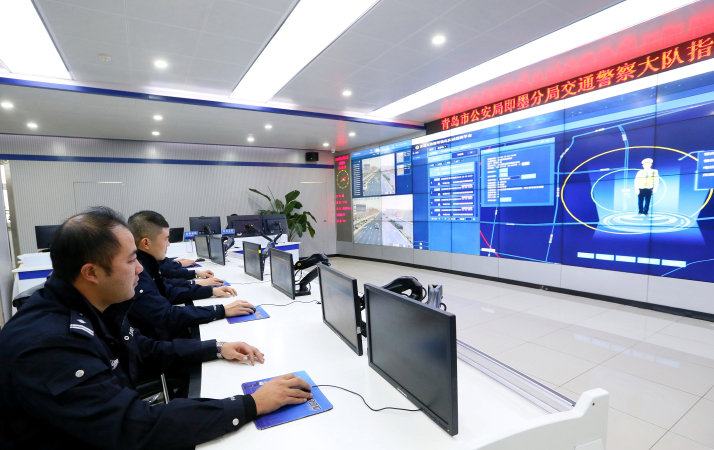Investment in the Future

Hi-tech revolutionizes infrastructure construction.
When the financial crisis hit the globe in 2008, one positive development was a new technological revolution. Research and development and application of new-generation information technology accelerated and began to be integrated with various industries.
The novel coronavirus outbreak has also accelerated a new technological revolution. It has led to diverse applications of new technologies and promoted in-depth transformation of social and economic development by using information technology extensively.
The use of supercomputing—concentrating the processing of multiple and parallel computers, robots and drones has seen a significant increase. Big data analysis, deep learning, artificial intelligence (AI) and blockchain technology as well as the Internet of Things (IoT) based on 5G are becoming more mature. Together with the accelerated integration of information technology and biotechnology, they will exert a profound impact on production, consumption and employment.
As the new technological revolution advances, existing infrastructure must be digitally reconstructed and information infrastructure constructed in accordance with the developing demand of new-generation information technology. This is essential to stabilize the economy in the short term and advance social and economic transformation in the long term.
New infrastructure that is compatible with the new technological revolution is of critical importance to China, both for the time being and in the long run.

A new concept
For a long time, when people thought of infrastructure construction, they thought of railways, roads, bridges, water conservancy projects and communal facilities. These were the material guarantees for the development of human society in the agricultural and industrial economy era and regarded as tools for stabilizing economic growth.
For example, the U.S. increased public expenditure on public projects such as airports, schools and water conservancy projects to promote economic growth and recovery during the global economic crisis that prevailed in 1929-33. Similarly, since the outbreak of the financial crisis in 2008, the economic stimulus plans adopted by various countries were largely focused on transportation infrastructure and urban and rural power grid construction.
With the new technological revolution, huge changes have inevitably taken place in infrastructure construction. The technological foundation of economic and social development has undergone fundamental changes. New infrastructure is presenting new services that are completely different from those in the industrial and agricultural ages and more conducive to promoting scientific and technological innovation and the application of its fruits. It is not only related to long-term economic and social development, but also satisfies people’s needs better.
As the role of information and data as basic production factors becomes more prominent, information or digital infrastructure becomes the basic content of infrastructure construction, and its performance becomes increasingly important for future economic and social development. The application of new technologies has played a big part in transforming infrastructure and will become an essential standard for modern infrastructure construction.
The essence
In the current stage, new infrastructure includes three categories. First, it refers to information infrastructure that new information technology needs for its development. This new infrastructure includes 5G, AI, the industrial Internet and the IoT.
Second, infrastructure that is transformed by the new information technology and other new technologies, such as smart buildings, smart cities and intelligent transportation.
Third, new facilities that satisfy the urgent needs of social and economic development, such as medical treatment and public health facilities in response to epidemics.
Digitalization and informatization are inherent characteristics of new infrastructure that is knowledge- and technology-intensive.
Currently, new infrastructure construction is in full swing globally. Optical fiber networks, data centers, the IoT and satellite Internet have become essential parts of life. Tech giants such as Google and Microsoft have paid out of pocket for Internet infrastructure construction.
China’s major technological achievements began to be utilized in real practice and the commercialization of 5G was hastened during the novel coronavirus outbreak as the disease expanded the application scenarios of technologies. Domestic navigation system BeiDou’s third-generation satellite network will be completed in May, which will expand its market.
New infrastructure is an important impetus for new technologies and new industries, and an opportunity for countries not to be missed. China is mobilizing all segments of society to increase investment in new infrastructure construction, which includes developing a new generation of national information infrastructure, advancing the progress of smart cities and building modern infrastructure for common use in the future.
Upgrading and rebuilding traditional infrastructure is also conducive to strengthening the applications of new technologies and new materials.
Window period
The novel coronavirus pandemic shows no sign of remission as of now. Although the situation in China is under control due to stringent prevention and control measures, there are still many uncertainties. A sound medical and health system is a crucial infrastructure for countries to respond to the pandemic, especially specialized infrastructure to deal with large-scale infections.
For China, it is essential to seize the opportunity of a relatively stable domestic epidemic situation and speed up building and improving medical and health infrastructure for epidemic prevention and control. It is also essential to strengthen the application of new technologies in such infrastructure construction and overcome the prevailing shortcomings as soon as possible so that future responses to epidemics become certain. This is a new infrastructure that will benefit people’s livelihood and national security.
The author is a researcher with the Science and Technology Talents Center of the Ministry of Science and Technology
 Facebook
Facebook
 Twitter
Twitter
 Linkedin
Linkedin
 Google +
Google +










